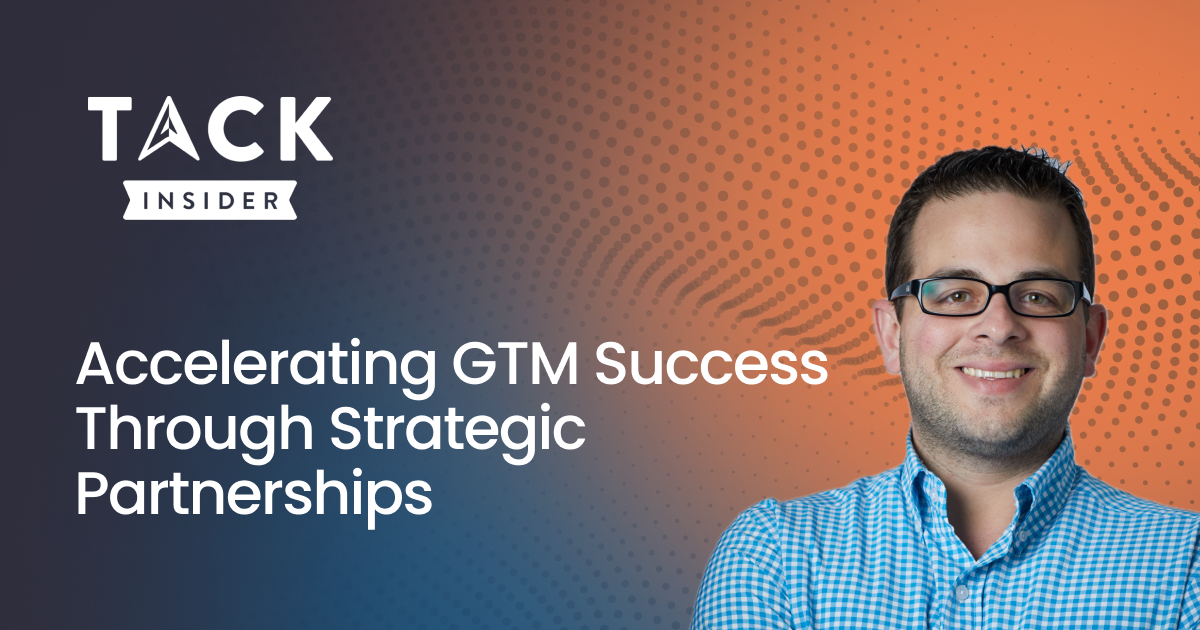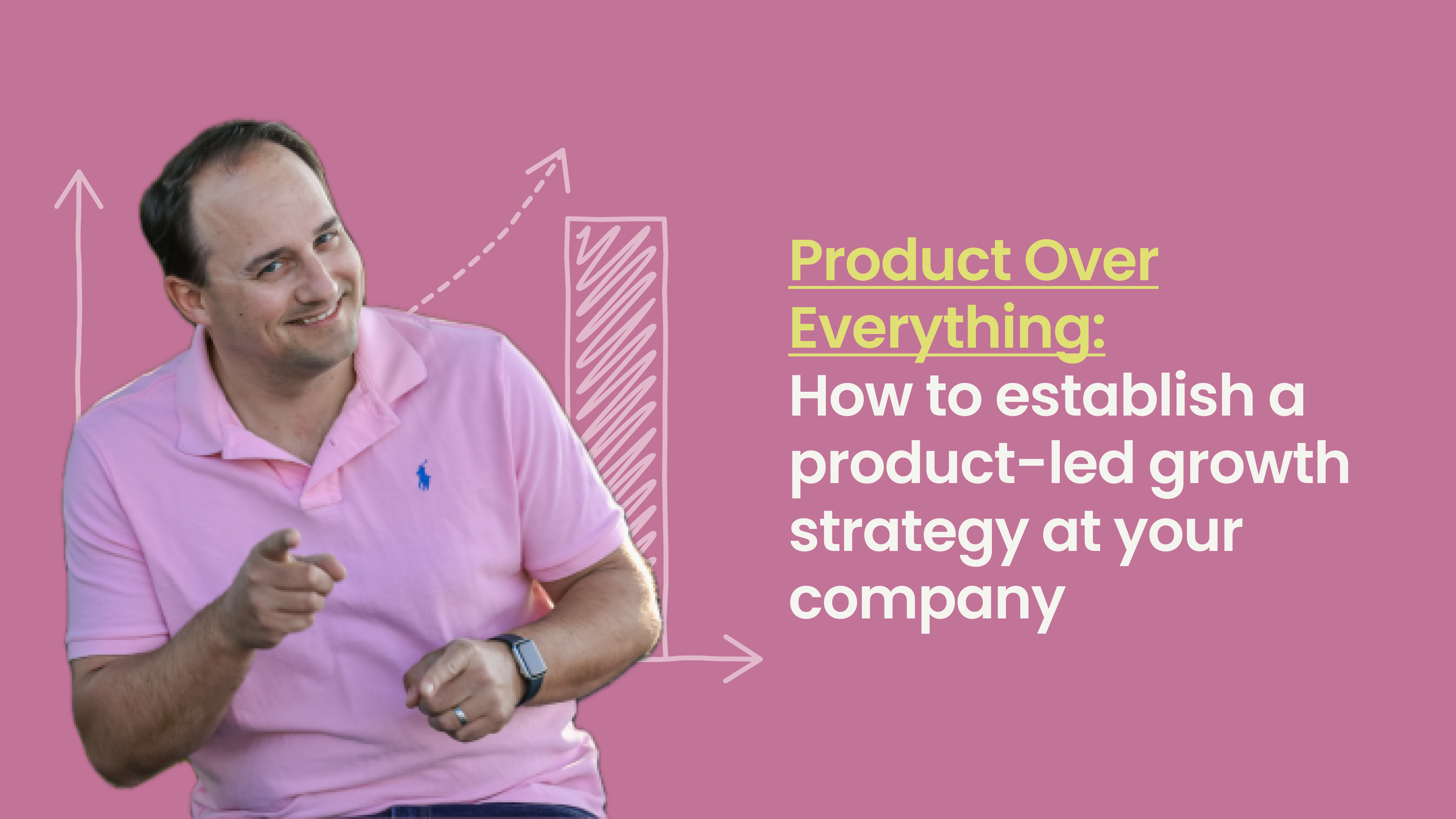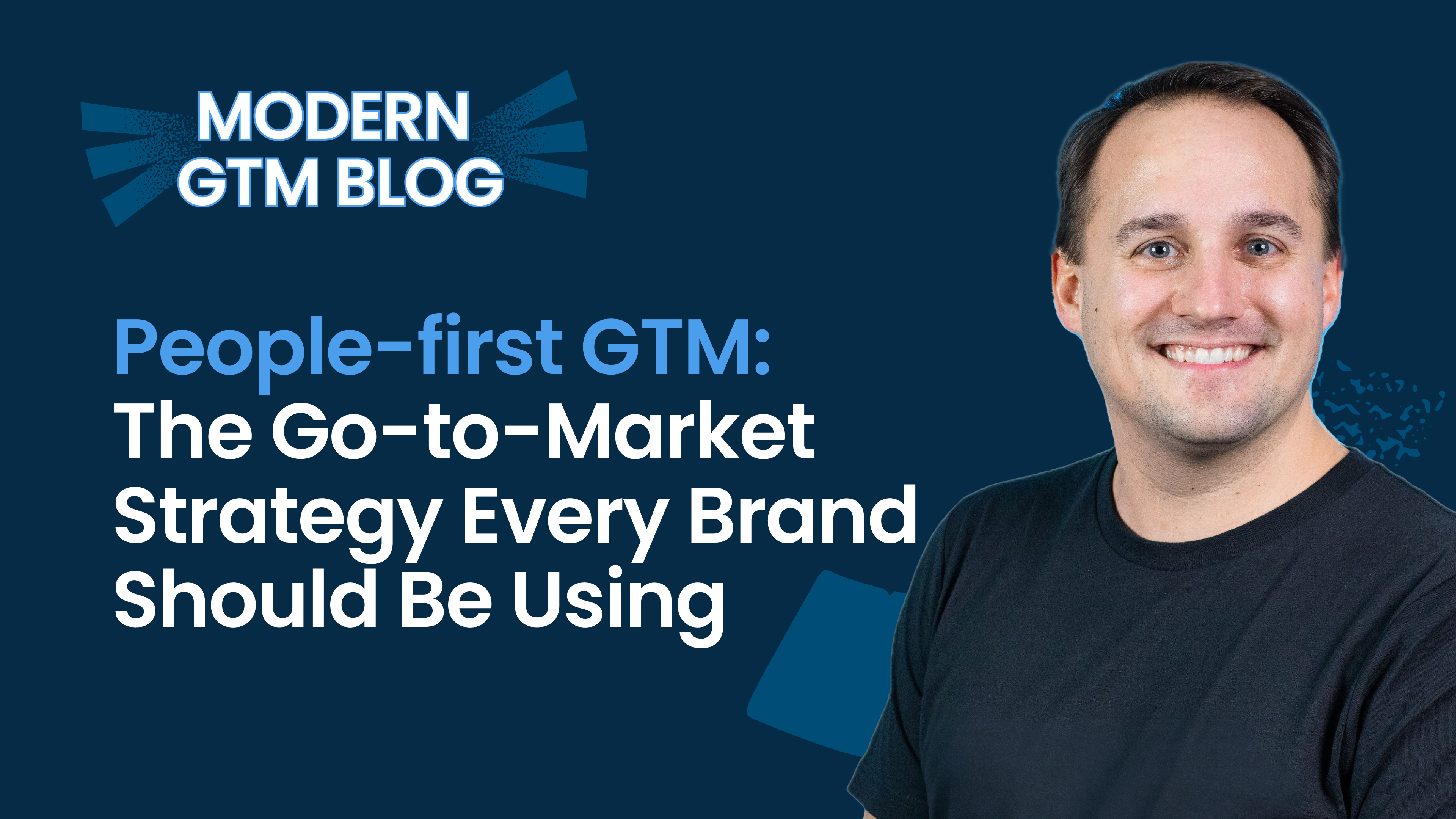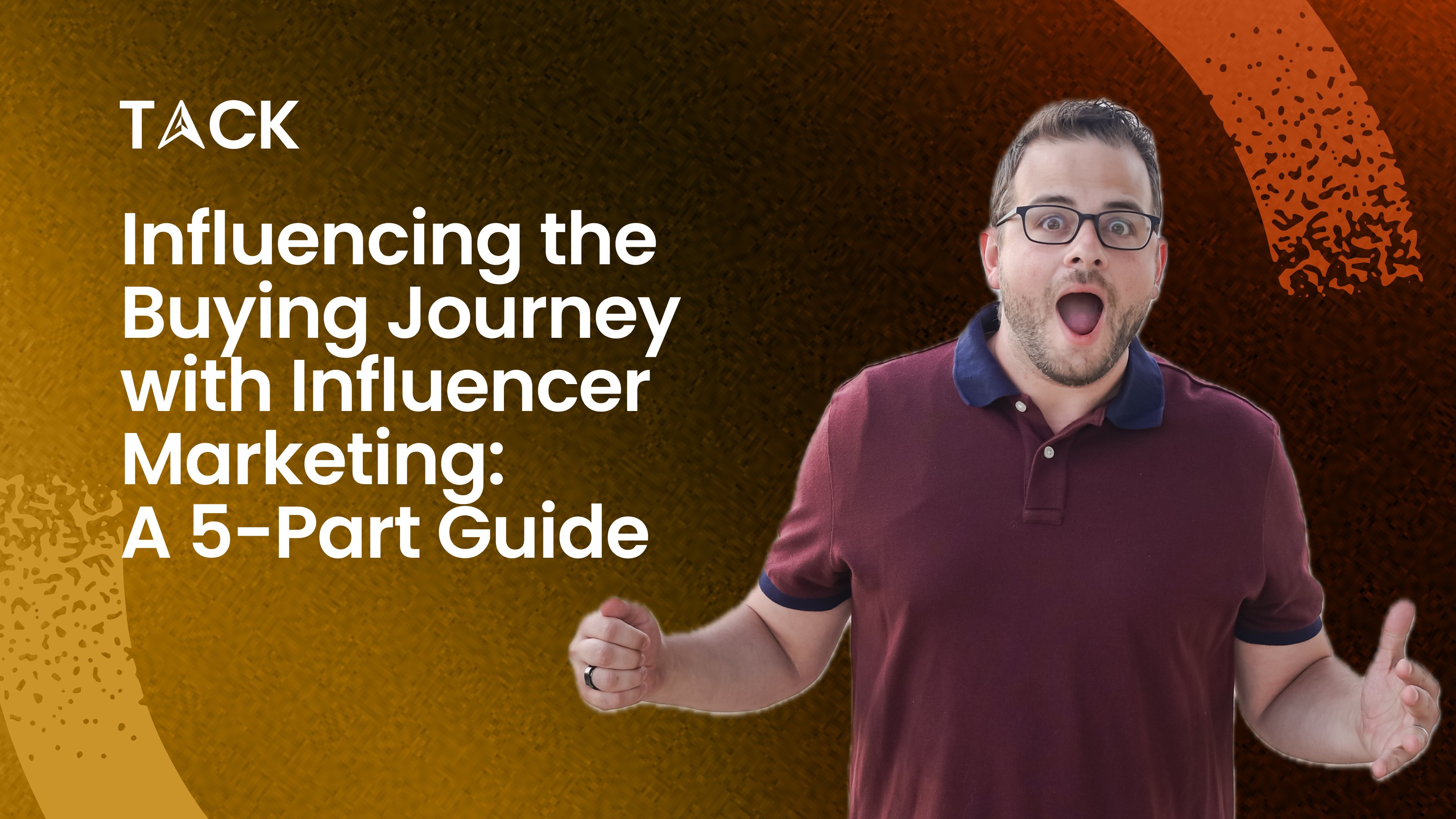Welcome back to the people-first GTM newsletter!
So many of you have joined us within the last week. Thank you!
Ever felt like your business is on the verge of something big, but you're not quite sure how to get there? Well, You're not alone. We've all been there—dreaming of that next level of success but feeling stuck in the same old routine.
But here's the thing: one big step can take your business from where it is now to where you want it to be. That step is strategic people-first partnerships.
In this newsletter edition, I will discuss people-first partnerships and how they can be the game-changer your business needs. We're talking about practical, down-to-earth strategies for finding the right partners, building strong relationships, and achieving bigger and better growth.
Did You Know?
Businesses that engage in strategic partnerships experience a 25% faster growth rate than those that go it alone. That's the power of teamwork!
Now, here's the secret sauce: a people-first approach. It's all about finding partners who share your values, goals, and passion for putting customers first. Because when you're on the same page, magic happens.
Why It Matters:
Studies show that companies with aligned values in their partnerships are 30% more likely to report high customer satisfaction levels. That's no coincidence—it's the result of genuine, authentic collaboration.
Let's compare traditional partnerships with people-first partnerships:
Traditional Partnerships:
Think of traditional partnerships as simple handshake agreements. Each party has its role, focusing on getting the job done efficiently.
Key Features:
-
Transactional Focus:
Traditional partnerships are task-oriented, with each side focusing on their specific responsibilities. -
Limited Collaboration:
There's less emphasis on building deep connections or sharing values; it's more about reaching the end goal. -
Goal-Oriented:
These partnerships aim to achieve specific objectives, like boosting sales or expanding market reach.
While effective for short-term goals, traditional partnerships might lack the personal touch and long-term benefits of more collaborative approaches.
People-First Partnerships:
Now, imagine partnerships where you're not just shaking hands but having a heartfelt conversation over coffee. That's the vibe of people-first partnerships—it's about connection and collaboration.
Key Features:
-
Relationship-centric:
People-first partnerships prioritize building genuine connections based on trust and shared values. -
Collaborative Mindset:
It's all about working together, pooling strengths, and finding win-win solutions. -
Customer-Centric:
These partnerships focus on putting customers first, understanding their needs, and delivering exceptional value.
People-first partnerships tend to foster deeper bonds, spark innovation, and create lasting value for everyone involved.
In short, while traditional partnerships get the job done, people-first partnerships bring warmth and collaboration to the table, making the journey more enjoyable and the outcomes more rewarding.
Why Going Alone is a No-Go in People-First GTM:
Going alone in a people-first GTM (Go-To-Market) strategy is like navigating a maze blindfolded—it's risky, and you're likely to miss out on valuable opportunities. Here's why:
-
Limited Perspective:
When you go it alone, you essentially rely on your insights and perspectives. Without external input, you may miss critical market trends, customer preferences, and innovative ideas that could propel your business forward.
Fix:
Flip the script! Listen to customers and tailor everything to what they need and love.
-
Missed Collaborative Opportunities:
Collaboration is key in a people-first GTM strategy. By partnering with others who share your values and goals, you can tap into their expertise, resources, and networks to amplify your reach and impact.
Fix:
Encourage open communication and teamwork across departments for smoother sailing and happier customers.
-
Customer Disconnect:
Putting customers first means listening to their needs, preferences, and feedback. Going it alone may result in a disconnect between your offerings and what your customers actually want, leading to decreased satisfaction and loyalty.
Solution:
Broaden your horizons and partner up to tap into outside perspectives and stay ahead of the curve with market trends and customer needs.
-
Stagnant Innovation:
Innovation thrives on diversity of thought and perspective. Without collaborating with external partners, you may be stuck in a rut, unable to generate fresh ideas or adapt to changing market conditions.
Solution:
Collaborate with fresh minds outside the company for new perspectives and ideas.
-
Lonely Journey:
Finally, going it alone can feel isolating and overwhelming. Building meaningful connections with others who share your vision can provide support, inspiration, and a sense of camaraderie as you navigate the challenges of bringing your product or service to market.
Solution:
Partner with partners who bring unique skills and strengths to the table for mutual success.
In summary, in a people-first GTM strategy, going alone is simply not an option. Embracing collaboration, listening to customers, and seeking diverse perspectives are essential for success in today's interconnected world.
Partner-Led Approach:
In a partner-led approach:
-
Collaboration is Key:
Partnerships are central to the strategy, with both parties actively contributing and sharing responsibility. -
Shared Goals:
Objectives are aligned between partners, focusing on mutual success and creating value for shared customers. -
Flexibility and Adaptability:
There's room for flexibility and adaptability as partners work together to navigate challenges and seize opportunities.
Practical Steps for People-First Partner Identification and Collaboration
Step 1: Identifying Potential Partners
-
Authentic Alignment:
Look for partners whose values resonate deeply with your own. Consider factors beyond just business objectives—think about shared missions, culture, and commitment to customer satisfaction.
Tools:
Use online directories like PartnerStack or Collaborizm to find businesses with similar values. Explore industry-specific forums and social media groups to connect with potential partners.
Best Platforms:
LinkedIn Groups, industry-specific forums (e.g., Reddit communities, Facebook groups), online marketplaces (e.g., PartnerStack, Collaborizm).
-
Customer-Centric Compatibility:
Prioritize partners who share your dedication to putting customers first. Seek out businesses that demonstrate a genuine understanding of and empathy for your target audience's needs and preferences.
Tools:
Utilize customer review platforms like G2 or TrustRadius to research potential partners' customer satisfaction ratings and reviews. Engage in social listening on platforms like Twitter or Facebook to gauge customer sentiment towards potential partners.
Best Platforms:
G2, TrustRadius, Twitter, Facebook.
-
Engage Your Community:
Tap into your existing community of customers, followers, and advocates for partner recommendations. Who better to suggest potential partners than those who already believe in what you do?
Tools:
Use customer relationship management (CRM) software to segment your customer base and identify potential brand advocates. Create referral programs or incentive schemes to encourage customers to refer potential partners.
Best Platforms:
Customer relationship management (CRM) software (e.g., HubSpot, Salesforce), referral marketing platforms (e.g., ReferralCandy, Ambassador), community engagement tools (e.g., Slack, Discord).
Step 2: Building Relationships
-
Humanize Your Outreach:
Approach potential partners as individuals, not just business entities. Craft personalized messages demonstrating your genuine interest in their work and how you see potential synergies between your organizations.
Tools:
Customize your outreach messages using email personalization tools like Mailchimp or HubSpot. Incorporate social media listening tools like Mention or Brandwatch to monitor potential partners' online activity and identify conversation topics.
Best Platforms:
Mailchimp, HubSpot, LinkedIn Sales Navigator, Mention, Brandwatch.
-
Listen and Learn:
Take the time to listen to your potential partners truly. Ask questions, seek to understand their goals and challenges, and show empathy for their unique perspectives and experiences.
Tools:
Use video conferencing platforms like Zoom or Google Meet to conduct virtual meetings with potential partners. Implement survey tools like SurveyMonkey or Google Forms to gather feedback and insights from potential partners.
Best Platforms:
Zoom, Google Meet, SurveyMonkey, Google Forms.
-
Transparency and Trust:
Be open and transparent about your intentions, capabilities, and limitations. Building trust is crucial in any partnership, and it starts with clear communication and honesty from the get-go.
Tools:
Use project management tools like Asana or Trello to document partnership agreements, action plans, and key milestones. Implement secure communication tools like Slack or Microsoft Teams to exchange sensitive information and maintain confidentiality.
Best Platforms:
Asana, Trello, Slack
Step 3: Collaborative Planning
-
Co-create with Compassion:
Embrace a collaborative mindset grounded in empathy and mutual respect. Work with your partners to co-create strategies prioritizing the well-being and satisfaction of all stakeholders, including customers, employees, and the community.
Tools:
Use collaborative whiteboarding tools like Miro or MURAL to facilitate brainstorming sessions and idea generation. Implement project management tools like
Monday.com
or ClickUp to document action plans and assign tasks.
Best Platforms:
Miro, MURAL,
Monday.com, ClickUp.
-
Share Resources, Share Success:
Pool your resources, expertise, and networks to create shared value for everyone involved. Collaborate on initiatives that go beyond short-term gains and contribute positively to the broader community and ecosystem.
Tools:
Cloud-based storage and collaboration platforms like Google Drive or Dropbox can securely share documents, files, and resources. Implement financial management tools like QuickBooks or FreshBooks to track expenses and monitor budgetary allocations.
Best Platforms:
Google Drive, Dropbox Business, QuickBooks, FreshBooks.
-
Iterate and Evolve Together:
Recognize that partnerships are dynamic and require ongoing effort and adaptation. Stay open to feedback, learn from successes and failures alike, and continuously iterate on your collaborative strategies to drive meaningful, sustainable growth.
Tools:
Implement feedback collection tools like Typeform or Google Forms to gather stakeholder input. Utilize analytics and reporting tools like Google Analytics or Tableau to track key performance indicators (KPIs) and identify areas for optimization.
Best Platforms:
Typeform, Google Forms, Google Analytics, Tableau.

Case Study: Salesforce and the AppExchange Ecosystem
Let's talk about Salesforce—the big player in the world of CRM software. Salesforce is all about helping businesses connect with their customers in new and better ways.
Challenge:
Salesforce wanted to provide all kinds of solutions to their customers, but they couldn't do it all on their own. They needed partners to make it happen.
Solution:
They introduced Salesforce AppExchange, the ultimate playground for software developers and tech wizards to collaborate and create innovative solutions. It's a place where developers can build, market, and sell all kinds of cool apps and tools that work seamlessly with Salesforce's CRM platform.
Here is how Salesforce did it:
-
Identifying Strategic Partners:
Salesforce hunted for partners who shared their vision and could bring something special to the table. They wanted partners who were as passionate about customer success as they were.
-
Building Relationships:
They didn't just stop at a handshake—they really invested in building relationships with their partners. They held events, provided training, and basically rolled out the red carpet to help their partners succeed.
-
Collaborative Planning:
Salesforce and their partners got down to business, brainstorming and collaborating on various cool solutions. They used Salesforce's platform as a springboard to develop custom apps, integrations, and industry-specific tools.
Results:
The Salesforce AppExchange has exploded into this bustling marketplace with thousands of partners and millions of installs worldwide.
-
Expanded Market Reach:
Salesforce has been able to reach new industries and markets that were previously untapped with the help of its partners. -
Increased Customer Success:
The variety of solutions available on the AppExchange means Salesforce customers can tailor their CRM experience to fit their exact needs. -
Accelerated Innovation:
By working hand-in-hand with its partners, Salesforce has been able to stay ahead of the curve and keep pushing the envelope in the world of CRM software.
Salesforce's journey with the AppExchange is a prime example of the power of partnerships. By teaming up with their partners and putting customers first, they've created this amazing ecosystem that's changing the game for businesses everywhere. And hey, they're just getting started—plenty more innovation will come!
So, what are the Key Takeaways?
-
Relationships Rule:
Partner-led growth is all about putting people first. Prioritize building real connections with your partners based on trust, respect, and shared values. -
Customers Come First:
Keep your focus on the people who matter most—your customers. Work with partners who are as customer-obsessed as you are, and together, you can deliver solutions that truly wow your audience. -
Goals in Sync:
Align your goals and objectives with your partners to ensure you're all rowing in the same direction. -
Get Creative:
Collaboration breeds innovation. Join forces with your partners to dream up new, exciting solutions that solve real customer problems. -
Keep Learning:
Stay open to feedback, keep an eye on the market, and be ready to adapt. -
Think Long-Term:
Rome wasn't built in a day, and neither are strong partnerships. Invest in building lasting relationships, and you'll reap the rewards for years to come. -
Measure What Matters:
Set clear metrics to track your progress and measure your impact. Whether it's customer satisfaction scores or revenue growth, keep an eye on the numbers that matter most to your partnership. -
Celebrate Wins:
Don't forget to pat yourselves on the back. Celebrate your successes, big and small, and give credit where it's due. After all, partnerships are a team effort, and every victory is worth cheering for.
People-first, partner-led growth is all about working together, putting customers first, and creating something awesome as a team. So, grab your partners, roll up your sleeves, and let's make some magic happen!
Hope you enjoyed this one! Don’t forget…
Partnering with people is at the heart of the people-first model.
Coming next week:
Content as GTM Engine
Until next week!
Nick
PS: Did you enjoy this? If so, send me an email and share your thoughts. Feel free to take the poll below. I want to make sure that these editions are valuable to all of you who read them. Is there anything you want me to touch on in upcoming drops?
PPS: Tell a friend about the people-first GTM newsletter. Sharing is caring.
🙂






